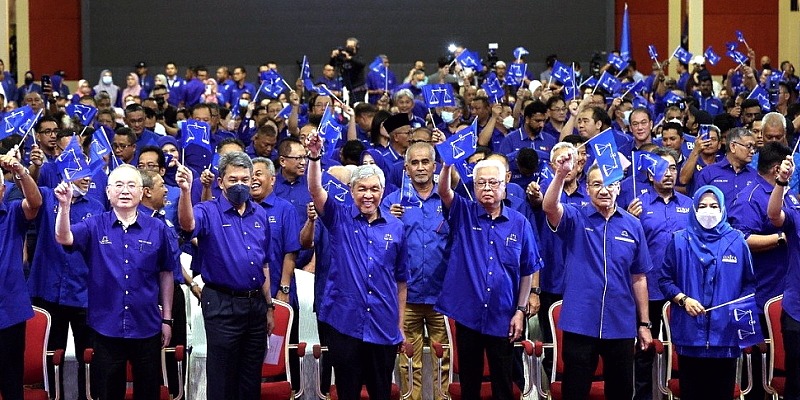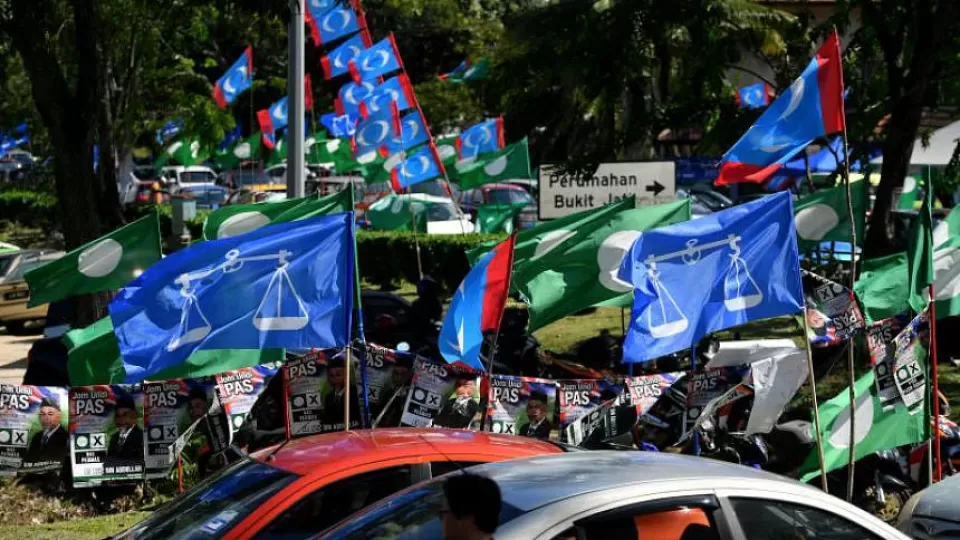November 3, 2022
KUALA LUMPUR – Many people are asking who will be the kingmakers in the coming election. Very obviously the answer lies to the “east.”
Those in power within Umno have gone all out to get PM Ismail Sabri to quickly dissolve the parliament, but are they really that confident of another landslide victory come November 19? Will their party take BN straight into Putrajaya?
Nomination day is just two days away, and based on what we have gathered, even if BN, PH and PN all claim to have full confidence in defeating their rivals, none can actually be sure of a win. If any of these three major alliances desires to rule alone, it will still need to seek the approval of the people in Sabah and Sarawak!
If BN or PH or PN leaders manage to secure the support of East Malaysians but are still thinking of wrestling more power instead of the people’s livelihood and the nation’s future, the new government will never be a stable one, as the country will very soon be plunged into the same old pit of turmoil once again.
The “What Rakyat Want” nationwide pre-election survey jointly run by Sin Chew Daily, The Star, Sinar Harian, Astro Awani and Malaysia Nanban, alongside three research institutions, O2 Research, Center for Malaysian Chinese Studies (Huayan) and Ilham Center from September 19 through October 9, has dissected and explored what the Malaysian public expect from the new government post-GE15.
The outcome by the three research institutions has been consistent in that the rising cost of living and skyrocketing goods prices remain the most pressing issues Malaysians are facing today. As such, addressing the people’s livelihood problem and lightening their living pressures have become their most urgent tasks after the election.
More importantly, as spiraling inflation is sweeping across the globe, especially after June next year, the new government must strive to address the problem of the people’s livelihood, and lead the nation in its fight against a looming worldwide recession.
As voters, this is not the time for us to keep feeling disenchanted with the chaotic Malaysian politics, hence the lack of motivation to head to the polling stations.
On the contrary, we should contemplate soberly, unaffected by external instigation, to appraise the performances of the three major contesting alliances, get to know their candidates for prime minister, their election line-ups, as well as the manifestos they are about to unveil soon.
We must decide who among them are the sincerest, serious about their obligations to the electorate, or are best prepared to run the country, before we sent their candidates into the August House. The younger ones, in particular, deserve to be given the opportunity.
I believe rival political camps have had some idea about what to expect from the final outcome of the election, and are planning to look for new partners to form a ruling coalition, which sadly is beyond the voters’ control.
Politics is very much about the number game. While the Chinese made up approximately 40% of the country’s population during the early years of independence, the percentage has since slipped to just around 26% today. What about the future?
In view of this, Chinese Malaysians should perhaps take into account the need for prudent risk assessment before they drop their ballots into the box. In economics, risk management is of paramount importance!
The three research institutions’ survey outcome indicates substantial support rates for PH and BN among the voters. While the Malays are more inclined to endorse a BN-PN alliance, the Chinese are overwhelmingly supportive of PH, even though they don’t rule out the possibility of a PH-BN tie-up to form a new government after the election. As for Indian voters, they are split between BN and PH.
The survey also shows that majority of Chinese Malaysians will still vote for PH although MCA has gained 10% of support vis-à-vis the last election.
As such, if MCA is able to field high-caliber young candidates in this election, it should be able to gain a few more seats, probably from the projected five to eight or more.
In the meantime, even if some in Umno have tried to dissuade Ahmad Zahid from running in the coming election, their attempt has failed. Perhaps the party president might want to change his mind before the nomination day, we mustn’t get excessively carried away by such wishful thinking.
Still plagued by a big load of court cases, Ahmad Zahid is said to have demanded all election candidates to sign an “Aku Janji” statutory declaration, effectively tying all major administrative decisions to the Umno supreme council, meaning government decision-makers must conform to the decisions of the party!

Caretaker prime minister Ismail Sabri has earlier said BN would definitely need to work with other parties to form a new government if it only manages to win 80 plus seats in GE15.
But the thing is, even before the election war is officially kicked off, there are already signs of disunity within BN, not to mention retaliatory actions against some dissident leaders, thus eroding the coalition’s winning chances. Both MIC president Vigneswaran Sanasee and his deputy Saravanan Murugan boycotted BN’s announcement of election candidates allegedly over seat allocation!
We all know that any political camp will need to have the magic number of 112 seats to form the new government, and the internal conflict within BN will not do it any good in this respect.
Even if they win more seats than PH and PN on the peninsula, they still need to extend an olive branch to GPS and GRS, the two ruling alliances in Sarawak and Sabah respectively. And if they want the new government to be more stable, they may even need to court either PKR in PH, or PAS in PN.
Let’s examine how strong BN, PH and PN are.
According to those familiar with Umno politicking, Umno itself should get around 68 seats in the election. Even with five and three more seats from MCA and MIC respectively, that’s still not enough to cross the threshold.
PH’s Malay support base pales by comparison with BN’s and therefore needs to put in a whole lot more effort to win over the Malay electorate. So far only DAP can claim relatively stable voter support base among the three PH component parties, while PKR and Amanah’s strengths today are just a fraction of their more glorious past. That said, PKR deputy president Rafizi Ramli has said confidently the coalition can win between 90 and 100 seats.
A DAP leader told Sin Chew Daily PKR could win 35 seats, DAP between 35 and 38, and Amanah 11. Nevertheless, another PKR leader was not that upbeat, conceding that PKR could at best manage 25 and Amanah 5 at most, although it won’t be problem for DAP to clinch 35 seats.
PN’s prospect is even more bleak. A Gerakan leader said the party even has problem fielding its candidates and can only hope for a zero breakthrough. As for the performance of Bersatu and PAS, we have divergent answers from different leaders. One said Bersatu could get 40 seats and PAS 20, while another was less optimistic, saying anything more than 5 for Bersatu and 10 for PAS is already a bonus!
As for state elections, a heavyweight leader who accurately predicted the results of the last two general elections have told us privately that PH stands a good chance of recapturing Perak; and with Shahidan Kassim, the incumbent MP for Arau, Perlis, dropped from BN’s candidate list, PAS will see its chance of seizing this tiny state up north significantly boosted. Pahang, meanwhile, is still very much BN/Umno’s for the taking.
As for the other states not holding their state elections this time, PH is still hopeful of retaining its grip on Selangor despite a slight downtrend. PAS will have no problem to be returned in Kelantan and Kedah, but delicate changes are said to be taking place in another PAS-held state Terengganu.
Sure enough the above is only early pre-election projection which could be tipped during the campaign period after nomination.
But one thing is certain: BN’s best bet for this election lies with Umno, PH with DAP, and PN with PAS; and either BN or PH with East Malaysian parties after the polling day – in forming the next federal government!
Consequently, both BN and PH have generously offered DPM posts as a bait in hope of winning the nod of East Malaysian parties to advance into Putrajaya side-by-side.
BN was the first to announce three DPM positions, including one each for Sabah and Sarawak. Umno has anticipated 23 and 15 seats from GPS and GRS respectively, and if BN successfully gets them on its side, they should be able to form a joint government with a simple majority.
A factor of uncertainty in Sabah is Warisan’s claim that the party has made significant headway and is collecting sufficient “chips” for any post-election negotiations.
So far PH has only pledged a DPM post for East Malaysia, but to secure its return to Putrajaya, it is widely expected to boost the offer soon, if they are not too far off the mark.
As a matter of fact, GPS and GRS need not heed the West Malaysian offers at all now, for they have what it takes to bargain for a good prize when the time comes!
Some even have the whimsical idea of proposing the premiership to Sarawak’s Abang Jo (provided that he also contests in the parliamentary election) if there isn’t a suitable candidate for the top government post from West Malaysia. This is to allow him to transplant the East Malaysian model of intercommunity harmony and moderation here, and overhaul our political landscape by weeding out rampant corruption and bigotry that have evolved into a hallmark of West Malaysia’s political culture.


